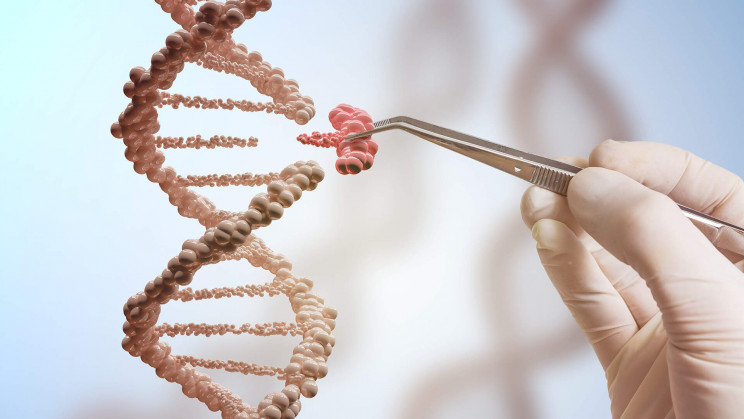UK becomes first to approve Casgevy genetic therapy for blood disorders
SOURCE: HTTPS://INTERESTINGENGINEERING.COM/
NOV 17, 2023
'Soft CRISPR': Safer gene editing could bring a 70 percent success rate
SOURCE: INTERESTINGENGINEERING.COM
JUL 01, 2022

Ten years ago this week, Jennifer Doudna and colleagues published the results of a test-tube experiment on bacterial genes, titled "A Programmable Dual RNA-Guided DNA Endonuclease in Adaptive Bacterial Immunity". The discovery led to a new kind of genome editing, now known as CRISPR.
CRISPR-Cas9 — short for clusters of regularly interspaced short palindromic repeats and CRISPR-associated protein 9 — enables rapid editing of the genome. Over the past decade, it has vastly changed the landscape of diseases being studied. Doctors use CRISPR to edit genes that cause hereditary diseases, and ever since cancer biologists figured that changes in DNA cause cancer, they use the method to correct those changes by manipulating DNA.
Ever since scientists realized that changes in DNA cause cancer, they have been searching for an easy way to correct those changes by manipulating DNA.
Now, a team of biologists at the University of California San Diego that includes postdoctoral scholar Sitara Roy, specialist Annabel Guichard and Professor Ethan Bier, described a novel, safer approach using natural DNA repair machinery that may correct genetic defects in the future.
The approach provides a foundation for novel gene therapy strategies that contain the potential to cure a large spectrum of genetic diseases.
Their results were published Friday in the journal Science Advances.
As in many cases, those suffering from genetic disorders carry distinct mutations in the two copies of genes inherited from their parents. This can mean that a mutation on one chromosome will have a functional sequence counterpart on the other chromosome. The researchers employed CRISPR genetic editing tools to 'exploit' this fact.
"The healthy variant can be used by the cell’s repair machinery to correct the defective mutation after cutting the mutant DNA," said Guichard, the senior author of the study, in a statement. "Remarkably, this can be achieved even more efficiently by a simple harmless nick."
The researchers worked with fruit flies; they designed mutants that permitted the visualization of such "homologous chromosome-templated repair", or HTR, by the production of pigments in their eyes. Initially, these mutants featured entirely white eyes. But when the same flies expressed CRISPR components (a guide RNA plus Cas9), they displayed large red patches across their eyes.
This was a sign that the cell's DNA repair machinery had succeeded in reversing the mutation using the functional DNA from the other chromosome.

The scientists then tested their new system with Cas9 variants known as "nickases" that targeted just one strand of DNA instead of both.
Surprisingly, the authors found that such nicks also gave rise to the high-level restoration of red-eye color nearly on par with normal (non-mutated) healthy flies. A 50-70 percent repair success rate with the nickase was found, compared with just 20-30 percent in dual-strand cutting Cas9, which also produces frequent mutations and targets other sites throughout the genome.
"I could not believe how well the nickase worked—it was completely unanticipated," said Roy, the lead author of the study.
"We don’t know yet how this process will translate to human cells and if we can apply it to any gene," said Guichard. "Some adjustment may be needed to obtain efficient HTR for disease-causing mutations carried by human chromosomes."
"Another notable advantage of this approach is its simplicity," said Bier. "It relies on very few components and DNA nicks are ‘soft,’ unlike Cas9, which produces full DNA breaks often accompanied by mutations."
"If the frequency of such events could be increased either by promoting interhomolog pairing or by optimizing nick-specific repair processes, such strategies could be harnessed to correct numerous dominant or trans-heterozygous disease-causing mutations," said Roy.
The "versatility" of the new system could be a model for fixing genetic mutations in mammals.
LATEST NEWS
WHAT'S TRENDING


Data Science
5 Imaginative Data Science Projects That Can Make Your Portfolio Stand Out
OCT 05, 2022

SOURCE: HTTPS://INTERESTINGENGINEERING.COM/
NOV 17, 2023
SOURCE: HTTPS://GENETICLITERACYPROJECT.ORG/
SEP 05, 2023
SOURCE: HTTPS://WWW.SCIENCEDAILY.COM/
AUG 07, 2023
SOURCE: HTTPS://WWW.SCIENCEDAILY.COM/
JUL 24, 2023
SOURCE: HTTPS://NEWS.MIT.EDU
JUL 20, 2023
SOURCE: BIOSPACE.COM
OCT 27, 2022